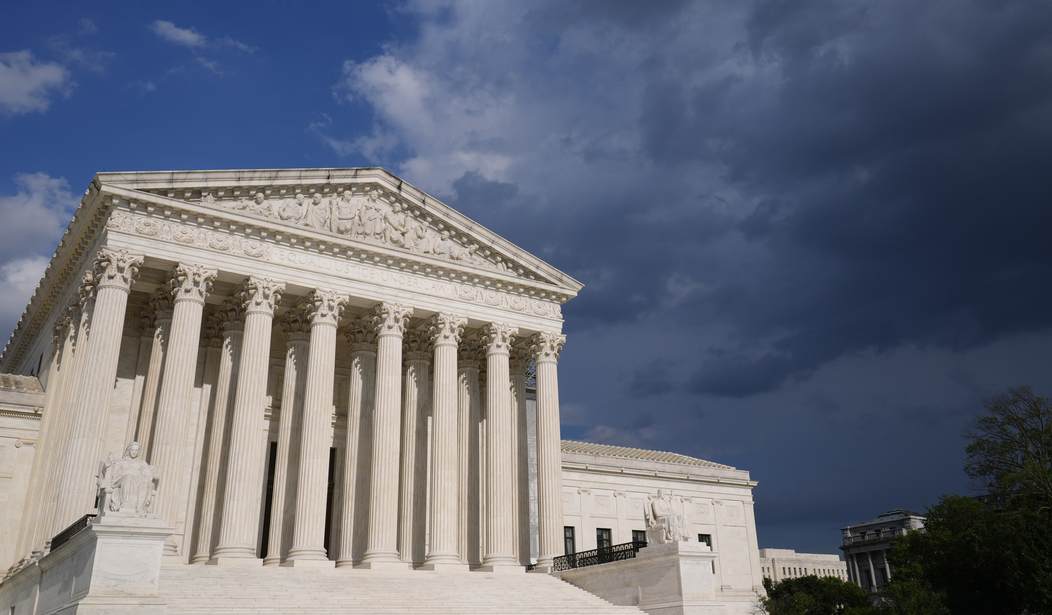Many years ago, I endorsed a constitutional amendment imposing a single 18-year term for each Supreme Court justice. Now President Joe Biden is promoting the same idea.
I have mixed feelings about that. For an octogenarian who has held federal office for more than 50 years to propose limiting others’ service seems absurd. And there is no statesmanship in Biden’s proposal. It is one of his many maneuvers reminiscent of the small-town politicians I knew in my younger days.
But worst of all is what Biden’s proposal omits: If you term-limit the court, you have to maintain the constitutional balance by term-limiting Congress as well.
The Founders
The American Founders called term limits “rotation in office.” They considered adding it to the Constitution, but decided not to partly because the Constitution limited the federal government to relatively few functions. They expected most governing to take place in the states, where legislators usually were elected annually and where rotation in office usually prevailed.
However, the Founders did include a procedure for constitutional amendments. (It’s in Article V.) They foresaw at least four reasons for amendments:
* to cure possible drafting defects in the original Constitution;
* to remedy present or future abuses of power;
* to clarify the text and correct faulty constitutional interpretations, including mistakes made by the Supreme Court; and
* to address changed conditions.
Recommended
It is a tribute to the Founders’ wisdom that subsequent generations have adopted amendments for all four purposes.
How the Need for Term Limits Arose
In the case of judicial term limits, the primary reason for a constitutional amendment is changed conditions: the enormous increase in human life expectancy.
In the era when the Constitution was ratified, many people died before the age of adulthood (21). A boy who reached 21 might expect to live into his early 60s. Of course, some died younger and some—such as John Adams—lived into their 90s. (Women usually lived shorter lives than men.)
Because of brief life expectancies, an appointment to the Supreme Court usually lasted less than a decade: Supreme Court justices appointed during the 1790s served an average of only about eight years.
Today, however, the average period of service on the Supreme Court is about 25 years. This encourages Presidents to appoint relatively young, relatively untested, justices to prolong the President’s period of influence.
Left-leaning justices have clung to office, because being left-of-center means enjoying power over others. Justice William O. Douglas—an ultra-liberal activist whose ethical and professional lapses never provoked comment from Sen. Joe Biden—afflicted the court for an astonishing 36 years (1939-1975).
But Douglas is only one example. Among other liberal “change agents,” William Brennan and Hugo Black endured for 34 years, John Paul Stevens for 35, and Harry Blackmun and Thurgood Marshall for 24. All of these men participated in decisions that re-wrote parts of the Constitution to conform with the liberal political agenda.
Long terms of office facilitate the build-up of judicial power beyond what is consistent with the constitutional design.
And justices with life terms often conform their views to the toxic culture of Washington, D.C. Instead of being independent of the political system, they become part of it. This helps explain why so many “conservative” appointees move left: Among the five liberal activists just mentioned, three were appointed by Republican Presidents.
A single 18-year term, without possibility of renewal, probably would promote judicial independence better than life tenure currently does.
Term Limits for Congress
All of the reasons that justify term limits for Supreme Court justices also apply to Congress: Extreme longevity allows the most senior lawmakers to amass enormous power. That power then enables them to deter or defeat political rivals. Loyalty to congressional colleagues and lobbyists eclipses loyalty to principle or to constituents—a phenomenon California state senator and commentator H.L. Richardson called “peer group shift.”
Some additional factors render the case for congressional term limits even more compelling than for the judiciary.
Under the Constitution as written, Congress is limited to certain functions, listed in Article I, Section 8 and in other places throughout the document. Due to liberal 20th century Supreme Court decisions, however, Congress now exercises power vastly greater than what the Constitution actually authorizes.
Long-term lawmakers also have strong incentives to promote the relentless growth of the central government, and they have more time to build political empires. By contrast, short-term lawmakers have less incentive to build empires and more incentive to encourage private sector prosperity.
A top priority for all responsible citizens should be pushing the congressional genie back into the constitutional bottle. But as in the case of other genies and other bottles, that is easier said than done. Imposing congressional term limits is one way to begin the process
Of course, a term limits amendment is unlikely to obtain the two-thirds approval of both the Senate and the House of Representatives necessary for submission to the states for ratification. That means it will have to be proposed, as provided in the Constitution, by a convention of the states.
Conclusion
Some say legislative term limits will empower the bureaucracy and the special interests. Experience has shown that the opposite is true: Bureaucrats and special interests have no direct vote in Congress, so they wield influence by developing relationships with lawmakers. Bureaucrats and lobbyists have less time to form close relationships with term-limited lawmakers. And term-limited lawmakers have less time and incentive to form relationships with bureaucrats and lobbyists.
As for using the Constitution’s convention of states for proposing a term-limits amendment: Some remain skeptical of this idea, primarily due to a continuing disinformation campaign first launched by liberal activists in the 1960s. You can find accurate information about the convention process at the website of the Article V Information Center, of which I am the moderator.
Rob Natelson is senior fellow in constitutional jurisprudence at the Independence Institute in Denver and a former constitutional law professor at the University of Montana. He is the author of “The Original Constitution: What It Actually Said and Meant” (3rd ed., 2015).























Join the conversation as a VIP Member